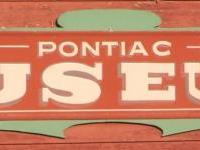There are many sights to be seen along the road from Aylmer to L’Isle-aux-Allumettes, particularly if the traveller is willing to depart from the main road (Highway 148) from time to time. Drivers should allow for two to three hours in each direction, and more depending on how many stops are anticipated. The drive is usually quite pleasant, with not too much traffic at most times. It offers splendid views of the Gatineau Hills, the Ottawa River, local villages and all kinds of sights along the way. For those willing to explore the back roads and local villages, there is much to be discovered.
The first stretch of Highway 148 takes us west from Aylmer along the Ottawa River. The views at times are breathtaking, particularly in the vicinity of Breckenridge. Here the road is high above than the river, so the panorama is especially beautiful. The river widens out to the west (Constance Bay), and on clear days, the water appears even bluer than the sky.
To the north we begin to notice the steep cliffs of the Gatineau Hills. These form the long southern boundary of Gatineau Park. In Luskville (in the municipality of Pontiac), the hills loom particularly close, and during the autumn the colours are stunning. Access to Gatineau Park is via Eardley, just up the highway.
Further along the 148 is Quyon. Here a car ferry travels back and forth across the Ottawa River, between Quebec and Ontario. A bit further west, travellers may wish to visit Norway Bay, a few kilometres off the highway. Situated on the Ottawa River, this community was once a thriving resort area in the late 1800s. Over a century later, it is still home to many cottagers. A long pier juts out into the bay, a survivor from the days when the steamboat was the primary means of travel up and down the valley.
 Returning to the highway, we continue towards the regional “metropolis” of Shawville.
Returning to the highway, we continue towards the regional “metropolis” of Shawville.
Around here the terrain is relatively flat and used mainly for farming and cattle. Shawville itself is known for a number of attractions, not least of which is the annual fall exposition, the Shawville Fair.
At one end of the fairgrounds, the Pontiac Museum, a small facility located in a former railway station (1886), may be visited on weekends during the summer and on special occasions, such as Canada Day and during the fair. The museum houses a collection of local historical artifacts.Shawville is known for its lovely brick homes.
At one time, several brick factories were active in town. Shawville also boasts seven churches.
A stroll around the downtown area is a pleasant one. Many of the old homes are still standing, some with their original decorative trim.
(See Part 2...)